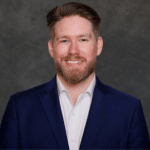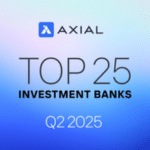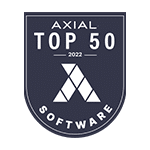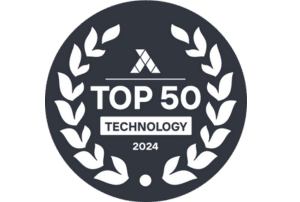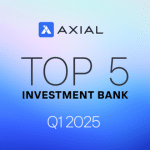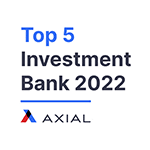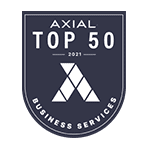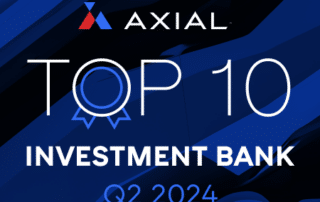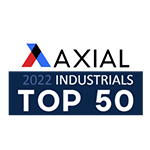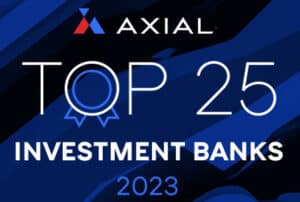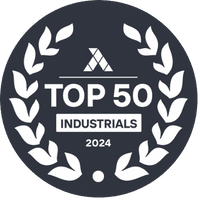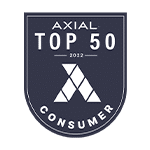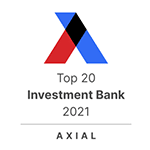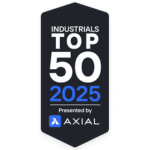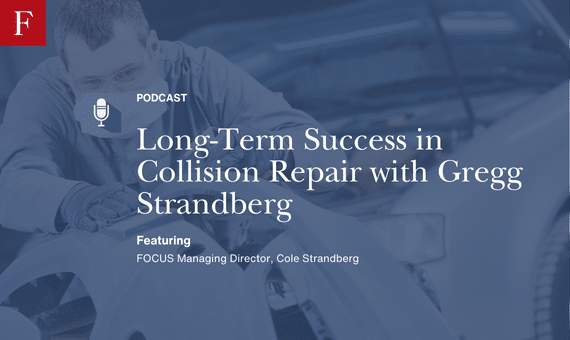
Long-Term Success in Collision Repair with Gregg Strandberg
On this week’s episode, Cole Strandberg chats with an Gregg Strandberg, the founder and former CEO of Filterworks USA, now known as Autotality, and someone who’s lived and breathed this industry for decades. From building one of the leading paint booth service and equipment companies in the country to guiding the business through rapid growth and eventually a private equity partnership, Gregg has seen it all. In this conversation, they talk about how equipment and facility design can become growth levers, not cost centers. They also dive into what it’s like running a family business, navigating transitions, and the trade-offs between family ownership and private equity. Whether you’re outfitting a shop, building your first location, or thinking about your long-term exit — this one’s packed with real-world wisdom.
Cole Strandberg: It was a funny remark that lives on in in infamy if in my opinion from my perspective but always fun to connect. We were just before we hit record talking about vacation and travel plans and your non profit activity all sorts of fun stuff. Want to bring us back to business? Of course, when we had a series announced about equipment financing, choosing the right equipment, I was like, well, I’m a little bit biased, but quantitatively, I don’t think there’s somebody out there who’s put in more equipment for the collision repair industry across the country in history than you. And so before we dive in, would love to hear the filter works story and how that all began.
Gregg Strandberg: Absolutely, yeah. And. And I don’t mind being the 60th guest, just, just to.
Cole Strandberg: All right, good. Let’s put that to rest.
Gregg Strandberg: The, the 59 before were excellent. And I’m BTB number 60, honestly. And now 150 also.
Cole Strandberg: I think somewhere in that range. Yeah, it’s been going. Coming up on three years.
Gregg Strandberg: Hard to believe that works. Well, I love to tell the filter works story because it’s, it’s very personal and it was a great, great journey for sure. And it started in, in 1988 and the business was founded to provide air conditioning filter service to South Florida businesses. So just change their AC filters. About a year after being in business, a fellow by the name of Corey Romeo, who was a paint booth filter expert, walked through my door, introduced me to the world of paint booth equipment. And at the time, it was kind of exciting because new technology was just starting to come to the US From Europe. Heated downdraft technology. A lot of great manufacturers out of Italy were just starting to get their equipment to the US and we had found that the customers who had made these purchases of this heated downdraft equipment were having just a very difficult time getting them installed. It’s very involved, requires concrete work permits, electrical work, fire suppression, cutting holes in roofs, just a lot to get a paint booth turnkeyed. So no one was really set up to do that, prepared to do it from start to finish, make the process as seamless for the customer as possible. And that’s the opportunity that we recognized is why don’t we embrace these challenges, make them our own and let our customers worry about what they do best, and that’s repair cars. So we aligned first all with a great manufacturer here in the US Met them at the NACE show and ended up handling their product and still do for many, many years. Great relationship, very supportive organization. The fact that they were made here made parts accessibility very nice and easy for us too. And they kind of grew with us. You know, they were, they were new to the US when we started taking on that product, and they grew along with, with, with us but it was kind of, that was the genesis of getting into the collision repair equipment industry. Was seeing this opportunity that had just arrived from Europe and trying to, to, to get in a position, our customers in a position to, to be up and operational far more quickly than, than what they were experiencing at the time.
Cole Strandberg: What a different industry it was at that point in time. Both from a collision repair perspective and certainly a collision repair equipment perspective. You mentioned some of the gaps you were trying to fill in terms of a lot of the ancillary pieces and the key pieces of installing paint booth equipment. What did the collision industry look like at that time? I mean that’s pre consolidation. Totally different landscape than it is today.
Gregg Strandberg: Very much so, yeah. Great question. And it’s kind of fun to look back and reflect and look at how far the industry really has come. At the time, you know, most of the paint was on, installed in the country were cross flow booths bought out of a catalog, you know, $5,000 piece of equipment, no heat involved. The lighting wasn’t great, just not great equipment and not designed for high production like heated downdraft technology would bring to the industry. And that’s what we’re seeing throughout these collision repair centers. I mean there are very, very few heated downdrafts at the time. So very, very different looking. Like I said, no consolidators. So it was a fun industry. I just got to meet so many wonderful people, body shop owners and operators, many more family shops and built just many, many great relationships, many of which I have still today. And enjoy those just great people working hard in an industry that was less sophisticated. But they figured it out. They found a way to get these cars repaired and get them back on the road the best way they could. And you know, repairs were high quality despite the lack of, of the quality of equipment that we have today.
Cole Strandberg: Totally cool. And you mentioned the friends. I mean we just talked about it. You have one of those industry friends coming over to the house, headed your direction as we speak. So those relationships run through very, very deep. Also coming into the industry, coming up on a decade ago myself, what an awesome thing that was to jump in. My last name was very, very recognizable. All the nice things people had to say about you was really, really cool and gave me such a tremendous head start in the industry today. Obviously on the back of 30 plus years. I didn’t math this before, but what 37 years now since the founding of Filterworks. Today that business is still running strong. It’s called Auto Tality. Talk to us about that organization Today and then pontificate for me, if you would, what a tremendous success. That is a household name for the collision repair industry across certainly the Southeast and beyond. What do you think drove that success?
Gregg Strandberg: I think a lot of it had to do with an extreme focus on our customers. We just took really, really good care of them. And then of course, the affiliation I mentioned earlier about who we affiliated with as far as equipment providers and manufacturers, just aligned ourselves and had the good fortune to align ourselves with a quality paint booth manufacturing manufacturer, a quality frame frame equipment manufacturer. These, these guys were and continue to manufacture some of the best equipment offered in collision repair. So that that alliance was very, very helpful. And then taking a different perspective and embracing the challenge of installation and specifically in the Florida market, permitting was very difficult. Another thing that we did that was a little different at the time was we really focus on, on layout design. A lot of our customers said, hey, the booth fits here, let’s put it here. And it worked. You know, it got them by. They made it work. Well, looking at it, you know, a little more from a scientific approach, let’s. Let’s look at workflow at process. How can we maybe improve your, your facility and maximize the square footage that you guys have? Because, you know, we’re going from a cross draft booth booth that’s capable of two vehicles a day to a heated downdraft paint booth that’s capable of six to eight vehicles per day. That’s a big difference in production. Now you need to make sure your facility is fully used to take advantage of that investment that you’ve made in a heated downdraft paint booth. And that became our focus. And it was interesting because we’d walk into shops and say, do you have access to any drawings of your facility? And the answer was no 99% of the time. What do we do? Then we taught ourselves how to hand measure shops. Start with a great plan. Once you have a drawing and you have it in AutoCAD now, you can look at endless alternatives, endless options as far as equipment placement goes. So whether it’s a greenfield that makes it nice and easy, a brand new facility, love working on those. Or an existing facility, those are more challenging, but it’s kind of a fun challenge because you want to turn that into the most productive facility you can. And I gained great insights and ideas from my customers over the years that I could use moving forward. That experience helped a lot. One example of that is a customer in Sarasota had a beautiful office, really nice, but it was completely blocked off. There was no view the customer cannot see from the office in the collision center at all. We started talking about what if we moved your paint shop up towards the office. It’s the quieter part of the repair. It’s not the major surgery. So the car is much better looking to a non professional collision repairer. And then the paint booths are very nice looking too. And we can put windows down the side. So they decided to do that, put the paint shop closest to the office, put some windows in the office and their customers could actually look out into the shop and directly into the paint booth. And that was a plus to the customers. The shop owner loved it. The paint technicians didn’t particularly love it at first. Some of them threatened to paint the windows so people couldn’t look in at them doing their work. But a lot of them embraced it, enjoyed it too. And. But just one example of kind of a unique approach to setting your collision repair facility not just for production, but also for, you know, as a show place too.
Cole Strandberg: I want to take a deeper dive into that because the layout and design piece of the puzzle is super important. Shout out mom. Right? For, for those who don’t know, my dad, of course, my mom, my wife, myself, we were all involved in the business under one roof for six years. And I’m not going to ask my dad here, his favorite employ coworker. Not going to put you on the spot like that. But my mom ran all layout and design for the business. Tremendous, tremendously talented. So let’s do talk about design and equipment strategy for a facility. When a shop is planning or redesigning a facility, where the heck do you start? How do you think about that?
Gregg Strandberg: You do start with a drawing. You start with a blueprint. Whether it’s an existing facility or noodle, that’s, that’s the place to begin. And then let’s talk about. Or let’s take a deep dive into what you’d like to do accomplish with your collision repair facility. What are the goals? What kind of work are you going to be doing? What kind of vehicles are you going to be focused on? Size of vehicle, weight of the vehicle is very important too. What kind of volumes do you hope to achieve in this, in this facility? Let’s talk some about that too. And when we get gathered data like that, just get the basics. And of course there are going to be land restrictions too that have to be looked at. But it’s kind of a starting point is let’s take a good hard look at what your goals are for the facility and the Customers you’re going to target for that facility too. And let’s start there and work from that. And a lot of consultation with our end user customer. Very, very important. Then we do like to draw on the expertise of the people supplying them with paint. Any other kind of equipment provider relations they might have, we’d like to take advantage of those too, because there’s so much knowledge from people that have worked in our industry and I want to know what they bring too. And then of course, you want to consult with an architect as well. Let’s talk about what our electrical requirements are. Let’s talk about the challenges that this particular building or piece of property might lend us as well. And we have had issues where customers have purchased land that’s not zoned appropriately. That’s something you want to really avoid because it can be a real challenge in many markets to rezone property. So those are some of the basics we look at when we get started.
Cole Strandberg: Makes total sense. And I’d point out too specifically in Florida, other major markets are going to be the same way to install a paint booth. It’s. It’s essentially building a building. Right. You need to have a general contractor involved, a mechanical contractor involved. In our case, you got both. You became that contractor to meet the needs, which I think is a real differentiator in that story as well. What are some of the biggest mistakes you see when it comes to equipment layout and. Or facility layout rather and equipment planning.
Gregg Strandberg: Really more than anything, I think not enough focus on it initially. We want to start working on that from the very beginning. We want to look at how we’re going to plan the facility. We don’t want to start with an architect who does not have experience in our space. We want to start with people who do have that experience and there are a lot of them who do that. You mentioned mom, you know, my wife. Shout out, shout out to Nancy. She did a super job. She’s one of the foremost nationwide in equipment lab design and for collision repair. And it’s a lot of fun to talk about at parties. Most people just their eyes start glazing over.
Cole Strandberg: Yeah, high school was a blast with telling everybody what my parents did. That was awesome.
Gregg Strandberg: You never invited me in for career day or anything.
Cole Strandberg: For the record, I don’t think we had career day. Yeah, okay, that’s. That’d be very sad if.
Gregg Strandberg: So, it probably wouldn’t have been a whole lot of fun, but we would have found a way to make it fun, I think, because it is a great industry, obviously, as we know and it would be fun to share that with young people who maybe want to enter into our industry as well. But where were we? We’re talking about, yeah, lab design. So we want to get some input from some people with real experience and specifically in collision repair. Some of the problems I saw in the early days, specifically in car dealerships where they have a great architect, did a great job with the dealership but had no experience in the, in the collision repair industry at all. And you wouldn’t believe some of the locations of paint booths I saw in the early days. There were nothing but a hindrance that, that the body shop manager had to manage and work around. It just was unfortunate. It was considered. It was in the back of the dealership. They didn’t give it the appropriate attention that it needed from a design perspective. And it’s not that hard. The experts are out there. Please put my email, make my email available. I’d be happy to help and direct people to find assistance in that regard because it is so important. Take the time. I think what I described with that particular instance of an architect who didn’t have experience, I think that’s mostly gone by the wayside. I think most facilities you see now are well thought out. Some of the, the existing facilities maybe not as much because they don’t have access to a drawing. It’s worth it. Make the investment, do it yourself. I mean we’d hand measure shops all the time. You’ve done it, I’ve done it many, many times. And a lot of our representatives did that. It was graph paper, a tape measure, a laser measure tool and a pencil. And we would spend hours, no charge to our customers to develop this. And then once we had it committed to paper and we measured everything, all the emergency exits, we located electrical panels that could potentially be a problem with paint booth location. Height of roll up doors, Very, very important. You don’t want a paint booth up against a roll up door and the roll up door is not tall enough for the paint booth doors to open. Just little things like that will occur if you don’t plan appropriately and start with a really good accurate drawing. It’s the best, best way to start.
Cole Strandberg: I remember at the time keeping things in perspective like facility layout equipment. That was our focus, that was number one. Whereas oftentimes that was 10th or 15th on the list of kind of action items for our clients. Pretty cool. Over the last couple years though, to hear some of the big leaders in the industry talk about the importance of that. Mike Anderson, for example, he’s been saying, hey, if you are planning on adding or replacing a paint booth in the next five years, do it now and make sure you can handle high roof vehicles. With these Rivian delivery vehicles coming up, bright drop sprinter van opportunities, go ahead and take the plunge. So there is conversation around that, which I think is really, really cool and really important. So much of a body shop is it’s a living, breathing thing, right? You can move it around, you can kind of adjust as you grow and as your needs change. So many things you can’t adjust. Paint booth location certainly comes to mind. How do you think about balancing the future needs of a company who has growth in mind with today’s needs?
Gregg Strandberg: Yeah, that also is a great question and often not considered enough either. I mean, let’s talk about potential growth when we’re designing a facility and what the ultimate goals are. So you’re obviously you want to meet your current needs and you want to be efficient in that way. But I think one of the mistakes that can be made is we short cut a little bit, maybe with paint new size, maybe with frame machine size to save a little money on the front end. But it’s less versatile and it doesn’t allow us to repair the same types of vehicles that a bigger piece of equipment or one specifically designed with additional features that will allow it to handle different equipment or different vehicles as they continue to evolve. I think because of the evolution of the vehicle and how it’s just dramatic, I mean it’s accelerating like I’ve never seen it before. You want to be as prepared as you can. You want to really be informed before making equipment buying decisions. And you want some input from the vehicle manufacturers, the OEMs of the vehicles that you plan to repair. Another thing that I neglected to mention that’s worth a little discussion too is when laying out a facility, I think a lot of attention needs to be paid to accommodate technician comfort and safety. Let’s make sure these guys are the ones getting it done day in and day out. Just in, in our business, our technicians were the ones getting it done day in and day out. Those guys were tireless. They were the ones on the front line. And that’s the way that technicians in the collision repair industry are. These are important, important, some of the most important parts of our industry. To get a vehicle safely restored, you have to have technicians who care, so care about them. Let’s make sure we’re making them as comfortable as possible. Some of our customers have climate controlled their collision centers. It’s expensive, but it does impact productivity allows you to attract great technicians. If we can supply lift equipment, that’ll raise the vehicle to make. Make it a little bit more comfortable for the technician as well. Let’s do that. That expense is going to pay you back. Let’s make this facility is safe. Oh, lighting. Let’s make sure we have plenty of lighting in the facility for the technician as well, so they can see exactly what it is they’re doing. It’s also good for morale too. Right. It’s cool, comfortable, clean working environment. We did a lot with vacuum systems too. Vacuum sanding to keep the facility clean, to keep the technicians healthy. And then, of course, safety equipment. Let’s talk about fresh air breathing for just a second. Let’s make sure the technicians have all the equipment necessary to do this job, be productive and live a long, healthy life. It’s not that hard to do.
Cole Strandberg: That’s been a. An absolute area of positive development, I think, in our industry. In your early days, I remember hearing stories of painters going in with T shirts. No fresh air breathing, maybe smoking a cigarette, painting a car. I think for the most part, these are now table stakes and things that are happening. And it’s super important, important to make this a great place to work that allows us to fix cars appropriately. So much of what you talked about too is going to influence OEM certifications, things like lighting, things like safety systems, things like the right equipment. Huge impact where there’s a very clear ROI in terms of scalability. One story that comes to mind is Lauderdale Collision, Lauderdale BMW Holland Organization, Shout Out. Steve Suppi, a former guest on the Collision Vision and a super guy. You guys did that facility before I joined the business. And for years there were two or three paint booths. I forget maybe three. And then a pit right next to the third one. And they knew they were going to grow. They knew they didn’t have the capacity needs to put in a booth right away, but they went ahead and had us include that in the future drawings. So flipping a permit on was a lot easier. It was ready to go. The concrete work was done. It was just standing up a cabin, throwing in the mechanical, and off we go. Super cool. And I think that’s a great way to think about. All right. How do we do what we need to do for now, being cognizant and conscious of our budget and the roi, but also how do we plan on growth in the future? I thought that was a pretty cool example.
Gregg Strandberg: That’s a great example. Yeah. Because the money savings too, when they go to Add this equipment now is substantial. They went ahead and they had the roof penetrations already handled and capped. They had the electrical supply right there. They had plenty gas supply as well. So talk about a quick, easy addition and a huge money saver for the customer too. Brilliant. Love to see it. And it’s amazing over the years how many facilities have needed that additional equipment much more quickly than they expected to. Let’s prepare for that whenever possible. Yep.
Cole Strandberg: Keep room for growth. Absolutely. Now I’ll set the stage eventually. This business evolved from paint booth equipment into frame measuring and welding into everything. Turnkey, automotive, hunter, lift equipment, things of that nature. Really a cool evolution when you view equipment categories. In your opinion, what kind of categories of equipment offer the highest ROI for shops today?
Gregg Strandberg: So when I think about that, I think about maximizing our square footage. Right. We’ve got a limited amount of of space. Let’s go ahead and make the most of that. We talked earlier today about cross drafts. Being able to produce two cars versus a heated downdraft that can produce six to eight cars. Think about that. They’re the same square footage, same footprint, essentially. It might be a little bit more for a paint booth down a heated downdraft with mechanical. We’re talking about very little bit of additional space being used. So. So that. And let’s look at the frame equipment too. I mean, we like to put some of our frame machines in ground for some of our customers. That’s the perfect fit. I think those are the types of things that we want to keep in mind. And when we’re making the purchase and we’re looking at heated downdraft technology, it’s going to give you an unbelievable return on investment when you’re looking at the proper frame equipment. There’s so many benefits to that, to having the right equipment. Technician satisfaction being one of them. When you’re looking at frame equipment, you really want to have something that’s going to repair the cars that are coming into your vehicle in a wide array, a wide variety. I’m very, very impressed with some of the manufacturers and how they’ve evolved, especially in the frame machine and paint booth arena. With frame equipment, they’ve gotten bigger. The jigging systems are universal now and they in the systems show you on the screen how to build a jig for to repair a particular vehicle. These are the types of things that are giving you return on investment. These are the kind of things that are attracting technicians that are efficient too. They’re getting a lot of hours from those stalls. That space that you’re allocating for them. So, I mean, so friend equipment, booth equipment or are two ways to really, really maximize or you’ll get a great return on investment if you invest in the best there.
Cole Strandberg: No question. And when we talk about that too, the technological innovation in vehicles, of course we talk about it all the time, but in equipment as well, to keep up with the innovation in vehicles that continues to evolve. Maybe short of paint booth equipment, I think that’s largely. We’ve had some minor adjustments and innovation there with advances in that technology, with that specialization. What do you think the risk of future proofing and getting yourself ready for continuous change looks like and what can we do about that?
Gregg Strandberg: I think it’s education. You really have to stay on top of our industry more than ever before just because of the rapid evolution. Before we leave the. The last question, though, one thing I neglected to mention, it’s definitely worth consideration is spa welders. Right. We’ve seen them in shops now. I think they continue to get better, more versatile, more reliable because it’s, you know, it’s a, it’s a big deal these, these spot welders. I think that’s another area that we continue to see evolution and worth real consideration for. For most shops out there, I’d say. So, you know, take a look at those as well.
Cole Strandberg: A great point. No question. I want to shift gears a little bit. I’d be remiss not to talk about the filter works and auto tality story a little bit more anytime we’re together. I want to talk about private equity. I want to talk about family businesses because I think it was a super cool story. You eventually partnered with a private equity group that of course took the company to the next level. Seven acquisitions, two and a half years under your leadership, quadrupled revenue, quadrupled headcount. What led to the decision to bring on a partner at that point in time. And I asked that really knowing the answer because I was involved in those conversations, but love your perspective on that world.
Gregg Strandberg: Yeah, I really found that we were in a position where we were being pulled to grow. I mean, there’s a lot of focus on the necessity of growth to accommodate our changing customer base. The consolidators were, were growing rapidly, their demands were growing and it was difficult to keep up, I think. And you know, after having run a business, owning and running a business for many, many years, you tend, there’s a, you know, there, you can tend towards being a little conservative because you’ve Been through the good times and the bad and I think I recognized a real need for serious investment in growth. And I had to be honest with myself, was I willing to put it out there and to extend myself from a financial perspective to grow this business to the point that it needed to be grown. Private equity offers a great avenue for bringing money and capital into a business and facilitating that growth. And I think that had a lot to do with it. As we were pulled to grow, we were trying to keep up and we did grow a lot of it. Can get a little uncomfortable with a business owner when you’re looking at payroll, weekly payrolls, five times what it was just a short period of time ago and you get a little apprehensive, a little nervous. Having private equity involves kind of, it’s a security and it’s a different perspective too. I did things a certain way because they worked well. It doesn’t mean they were the best and most efficient way. And when you have private equity come in, they’re looking at it from a whole new way and it’s all about growth. In that case they really want to propel growth. And then the key there is partnering with the right people to people you like and trust, which we were fortunate enough to align with. Really nice people, good to work with and I’m still involved with them today and I enjoy our time together. So that had a lot to do with it too. Being approached by the right group I think at the right time that had that, I mean that’s kind of my perspective. How do you feel about that?
Cole Strandberg: Couldn’t agree more. When I, when I speak with folks who are considering partnering with private equity, I think that’s like the perfect use case is when you feel you have, you’re, you’re getting pulled into growth. You’ve taken it as far as, not as far as you can, but as far as you’re comfortable taking it. But it would make sense to have that additional capital, access to really smart people and strategic thinkers who are going to facilitate with their own capital and giving you some chips off the table, some of that growth and step right into what your customer base is asking of you and wanting of you. I think for me it was legitimately a better education than business school. Going from a family run business into a private equity backed business. And there are pros and cons for each. But to see that transition was super interesting from your perspective. Well, before I get here, if a private equity group says nothing is going to change post transaction, they’re wrong. They might not be meaning to be wrong, but there are changes. That’s the nature of it. They’re buying or investing in this business to improve it, to grow it, to scale it, to make it better than it is today. So there will be changes. From your perspective, what did those changes look like? You went from being a business owner and CEO to being a private equity backed CEO. And I know your life got a little bit different throughout that transition.
Gregg Strandberg: It did looking in terms of not just focusing on organic growth, I think, and looking at growth through acquisition, which is a great way to grow. And that’s something we didn’t even really consider at the time. When you’re, when there is rapid growth, the way you manage and handle a business simply has got to change. You know, before the acquisition I knew everybody within our, within our business and could reach out and talk to everybody. Well, when you’re growing that quickly and you’re acquiring other businesses, things have got to change. Certainly financial controls have to change, right? You need a cfo, you need someone who’s absolutely dialed into bringing computer systems that those are the kind of things when it’s a family owned business they can weight because you can work through those. You’re focused on sales and then delivering on what you sell. Having a happy workforce and a good, you know, or a great culture. When private equity comes in, it’s, it is a completely different perspective and they really want to have a firm handle on the finances and constantly looking at, you know, the KPIs, things that we did fundamentally, but far less structured. So bringing structure to the business is critical. You have to have that framework if you’re going to do a lot of add on acquisitions and grow the business that way. Major change there. And of course having access to capital too. I didn’t like to take on debt and that is, you know, it’s good and bad. It’s certainly not great if you plan on aggressive growth. And again, our customers were calling us to grow or wanting us to grow, but those are some of the differences. It has to become a little bit less personal. And that can be a good thing too because I stayed involved as CEO for three years after, after selling and it allowed, you know, when it’s yours and you’ve raised it from nothing, it’s personal, you know, and a lot of it’s personal. Your decisions are your, how your customers affected, how your, your, your team, your people who work with you day to day, work for you day to day. Everything’s personal. When it’s after an acquisition, you can Be a little bit more. And like you mentioned taking chips off the table, which is very nice thing too, but it allows you to think strategically more than ever before. And then you also have people that you can rely on. So when you do want to take a break, a little time off, you’re not tied to the office. That was a benefit I found in working with private equity too. You’d have a CFO and a president who could handle things when you were gone, could make the decisions that, that you would have had to have made prior to acquisition. So those are some of the changes. You know, we would, we would buy our vehicles two or three years old at auction and run them in ground, you know, maintain them well and run them hard. You’d lease those vehicles in private equity. You know, they have great reasons for doing all this. And the financial controls were fantastic. Which is, was not a focus of ours. Ours was driving sales, of course, basics, you know, that you have to do to run a successful business. But for us, the focus was just driving sales and delivering the best product and service we could. And that continues to be a focus. But you have teams, almost silos to an extent, where the finance guys are working on that. Your sales team is doing their thing. The installation and service departments are well looked after, run. You spend a lot of time with an org chart. I didn’t do that prior to acquisition. Right. Yeah, the org chart was pretty straightforward. But that’s an important thing. I mean, if you’re looking strategically to grow, to have an org chart, make sure you have the right people in place and who reports to whom. Very, very important.
Cole Strandberg: Man, I nailed it. There’s so much to dive a little deeper into. And this is not a episode or a series based on private equity. But I think you nailed so many things, man. When it’s a family business, when you’re growing like crazy, that infrastructure and that org chart sort of gets organically built out as it’s needed. You get pulled into creating these things. When it’s private equity, they build all of that with a purpose. Right? The, the vision, the visualization that comes to my mind when it’s family run and owned, you’re building the airplane on your way, falling out of the sky, and you’re figuring it out. Whereas private equity, they want to make sure every nut and bolt is in place before you even take off. It forces you to think differently. Another big one too is cash flow. I think one of the biggest misconceptions about private equity is, oh, we got tons of money, all good yeah, tons of money for sure, but debt too. There’s not that cash sitting in the bank to take to auction typically and go buy these vehicles used. It makes more sense from a cash flow perspective to maybe lease these vehicles or finance these vehicles and make sure it’s healthy. But you don’t have that typically, that large nest egg kind of sitting in the bank for a rainy day. It’s a lot leaner, which is somewhat counterintuitive. How should I know? We talked a little bit about this, but if you were in a founder CEO shoes right now, kind of debating taking on outside capital or pursuing an exit, when would you feel the right time is? I know we just pontificated about that a little bit, but today is different than it was back in 2018, 2019 as well.
Gregg Strandberg: Yeah, it depends obviously on your personal goals, you know, your, your age, how long you want to keep, you know, being fully engaged in the business. What do you see on the horizon in the industry that might, you know, that might influence if it’s the right time for you? One of the things that I was part of a Vistage organization, which is awesome if you haven’t looked into that, I encourage everybody to take a look at Vistage. It’s a great organization. It’s basically you get together with a group of like minded business individuals once a month in a very structured environment. You have a chairperson who kind of guides you and works with you and works through challenges in your business with you. And you see these folks, you see your Vistage shared twice a month and then you see the group once a month. Our Vistage chair was a great man named Harvey Gelman, may he rest in peace. He’s just a super individual. He brought a fresh perspective to my business. And the thing that he told me is he said as a CEO and founder, you want to be, want to be a visionary and you want to be a talent scout. Well, being a visionary is going to allow you, help you decide when it’s the right time for you to maybe step aside or partner with private equity and maybe start a transition process too. Because you’re seeing what’s, what’s coming for your business, you’re seeing what’s coming for the industry. When you’re evaluating that, is it comfortable for you? Do you think you’re set up and have the tools to continue to drive growth in your business, or is it a great time to start handing off what you’ve learned and what you know and help the next generation get prepared for success in the changing market? Ahead. It’s a lot of self evaluation. I think prior to partnering with private equity or deciding it’s time to start to work on an exit strategy. I guess that’s kind of how, you know, being the visionary and being consistently and constantly looking at your business, how to improve it. When you start to see things that are less comfortable for you, maybe it’s time to start looking the outside resources. On the other hand, if you want a capital infusion to fuel growth, that would have been a good option for us too, at the time. Not one I really ever considered. And I. I guess in. In evaluating myself, I’m not sure how comfortable I would have been with that. I think the avenue we chose was a great fit for us at the time.
Cole Strandberg: Yeah, there is no one size fits. All right answer. Right. It’s all about you and taking advantage of inventory of your goals, yourself, your personality. No question. I’ve heard a million stories from you. We have some together, certainly during our time at Filterworks and Autitality. Is there a story that stands out from your time building the company? Something that shaped your perspective as a leader or just that you look back super fondly on?
Gregg Strandberg: Obviously working with you guys was just absolutely wonderful. Really. I mean, what a great time. When it was happening, you know, for the six years we were able to work together, it just. It was a time I really appreciated because I knew, you know, it wasn’t going to be forever. And I loved that. I think that it was just a fantastic experience working with family and us working together so well with your wife Belle and your mom, Nancy. Just a great experience, a fun experience. And the relationships we built are something I won’t forget with many of our industry partners. I mentioned Harvey Gelman. The thing he brought to our business was absolutely amazing things that I thought were not possible to do. And he would simply ask me, why not? Have you tried? And my answer would be, I just don’t think it can be. Well, you don’t know really if you don’t try, do you? And by him pushing me in certain ways, respects, it absolutely changed the business. And sitting here today, it shocks me the. The influence and the effect those changes had on our business. Absolutely incredible. And they were pretty. I mean, they were pretty simple ideas, but can’t see the forest for the trees sometimes, right? You grew up in it, you built it. You feel that it’s, you know, this is what it is. And some of the things that you felt were hard and fast rules weren’t necessarily. And Harvey pushed me to think about things a little differently. So having an outside perspective from a peer or a mentor I think can be. I met Harvey in 2011, so I was no young guy in his business by any means. I thought I kind of had seen a lot of it and didn’t need that much outside input. Boy, was I wrong. Even at that age. I wasn’t 25 at that time, you know, so even at that age I was, I was shocked at what someone with more experience than I could bring to it and just a fresh set of eyes from an educated person who cares about your success. And Vistage is a great way to go about that. I’m sure there are many other groups around that offer the same thing because as a business owner you don’t have a board traditionally you don’t have the people that you that report to you are going to often reflect what you’re. What they know you want to say in many cases. But having an outside person come in and really give you a different perspective, I can’t say enough about that and would encourage anybody to do that to seek out, find a mentor, find a peer who maybe has gone through some of the same things you have or might have a fresh perspective of your business.
Cole Strandberg: Invaluable, right? In the framework of collision repair, 20 groups are an amazing thing. Vistage is an amazing thing. Entrepreneurship can be a very, very lonely road. In our, our case, I hope you didn’t feel that way because we had family and great friends. I mean gosh man, the, the relationships that were created and bolstered throughout that family business journey were insane. Shout out to Uncle Marion for for example, a year ago we were over in Auto Mechanica in, in Germany together. So some really, really cool things. And man, when family business works, it works. And in our case it certainly did. You’ve been extremely generous with your time. I know you remain a busy guy. Multiple boards that you’re involved in still chairman of the board with the family business. Just got a new board seat with a non profit that you’ve been involved in today, which is super, super cool. Looking back to this point, obviously many, many more things to come and accomplish. What are you most proud of in what you created and built?
Gregg Strandberg: I think I’m really proud of our reputation, the reputation that we had with our industry to just do the right thing. It’s integrity, it’s professionalism. That’s what I heard about our organization and I just loved it. The people who made up our company and continue in many cases to make up our company, just super committed hard working people who got the job done and they helped obviously build that relationship or that reputation for professionalism and integrity that is such a, it’s such an important part of a business culture and I think that’s one of the things I’m most proud of. And then I gotta be honest with you, you’re walking around with you now and seeing the respect that you’re given in this industry makes me feel very proud too. Nobody knew me at Auto Mechanica in Germany, but a lot of people knew you. I already feel like a dinosaur.
Cole Strandberg: Oh, stop it man. Stop it, stop it. Oh, it’s, it’s super cool that we get to do stuff like this now and can’t express my appreciation for you, what you built, what you continue to do all the time. And it’s cool to do that full circle and very publicly here and really appreciate spending time with you in this forum. And then we get to go on a little vacation together this weekend too. So we’ll keep the good times rolling. You mentioned. Folks can reach out if they have any facility questions. I know you have access to a ton of resources. I am going to go ahead and include your email address in the show notes for anybody who’d like to reach out along with the website for Auto Tality and anything else. We’ll talk online about what exactly to include. But man, what an absolute pleasure. Thank you for taking the time here on this Wednesday afternoon at the time of the recording. Really cool to be able to do this. So thank you for joining us on the Collision Vision.

